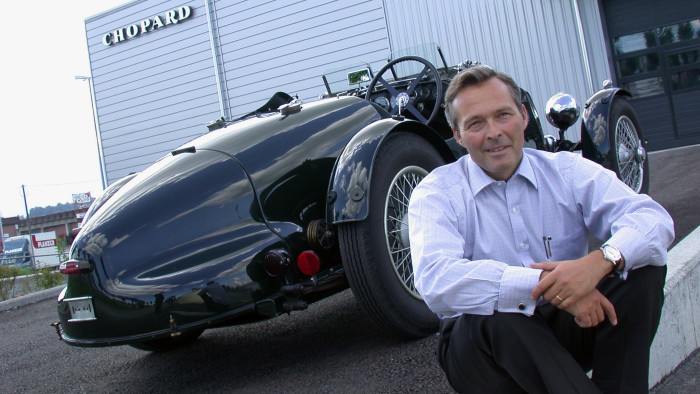Swatch decision on ETA movements shakes up world of chronographs

Roula Khalaf, Editor of the FT, selects her favourite stories in this weekly newsletter.
Among the most significant launches at this year’s BaselWorld fair will be the first watches containing TAG Heuer’s in-house chronograph movement, Calibre 1969. Named after the year in which Heuer and its partners produced one of the original automatic chronograph movements, it marks a stage towards full production autonomy for the company.
A specialist in chronographs (watches with a stopwatch function), it intends to be making 100,000 such movements annually within two years.
Traditionally, most chronographs from luxury brands were enabled by one movement, the Valjoux 7750, produced by ETA, the Swiss manufacturer owned by Swatch Group. But the group’s decision in 2011 to phase out the supply of ETA movements to rivals has forced those brands to adapt. Calibre 1969 is the latest of a number of in-house chronographs to have appeared in the past year, largely as a result of Swatch’s decision.
Among the big names, Chopard and Cartier have this year joined the list of chronograph producers. Chopard’s Superfast Chrono was launched as one of a trio of watches that bring in-house movements for the first time to its mainstream Classic Racing collection.
Cartier, meanwhile, has added a chronograph to the Calibre de Cartier range, which it launched in 2010 to house its debut volume movement, the 1904-PS MC automatic calibre.
Developing an in-house movement is no mean accomplishment, requiring millions of dollars of investment. A chronograph ramps up the complexity – and the cost – several fold.
“It’s not recognised generally, but a chronograph has at least twice as many components [as a time-only watch], and it has more moving parts than even a tourbillon,” says Chopard’s co-president, Karl-Friedrich Scheufele. “It has probably been the longest and most sophisticated development we’ve done so far.”
Different companies take different approaches. For its first in-house chronograph movement, Calibre 1887 (launched in 2011), TAG Heuer needed to move quickly; it came to an agreement with Seiko to base the movement on one made by the Japanese manufacturer. The new Calibre 1969, by contrast, has been entirely created by TAG Heuer itself.
At the same time, the company has established an haute horlogerie studio to focus on innovation. Chopard and Cartier have pursued a similar strategy, using their fine-watchmaking facilities to develop products suitable for high-volume production at lower price points.
Ulysse Nardin, meanwhile, has been able to take advantage of Ebel’s withdrawal from high-end men’s watches, buying the company’s chronograph movement – including designs, machinery and technicians – and souping this up with its proprietary silicon escapement technology. This also hit the market in 2013, in the form of the Marine Chronograph Manufacture.
Since the development costs inevitably dictate higher price points, technological refinements are common among the new chronographs, as watchmakers seek to outdo Swatch’s Valjoux 7750.
The starting point for this is a chronograph mechanism governed by a column wheel/vertical clutch system, a complex construction that ensures a satisfying, clean “click” when the pushers are operated. IWC and Chopard have taken things further by adding flyback mechanisms.
At the higher end of the market, Girard-Perregaux last year launched a proprietary movement for its 1966 line. Where previous chronographs were powered by normal movements with a chronograph module applied, the new version is a hand-wound, integrated chronograph calibre, ensuring a thinner watch that compares favourably with other top-end models.
Perhaps the most impressive new proprietary example, however, has come from an unexpected source: Louis Vuitton’s Tambour Twin Chrono, designed for timing yacht races. This morphs the idea of a split-seconds chrono (in which two separate stopwatch mechanisms run simultaneously) into a watch with three separate chronograph registers, two for timing independent events and one that displays the difference between them.
Stéphane Linder, TAG Heuer’s chief executive, who took up the post in June 2013, says: “I’m very in favour of the decision made by Swatch Group. Although it’s been difficult for us in the past five years, we now own our own destiny, and we’ll be capable of innovating on mass production.
“Buying off the shelf from suppliers you can really only innovate the decoration. Now we own a lot of breakthroughs because of our haute horlogerie work, but we also have mass-quantity capabilities. Having both assets, you’re able to start really innovating.”
Comments